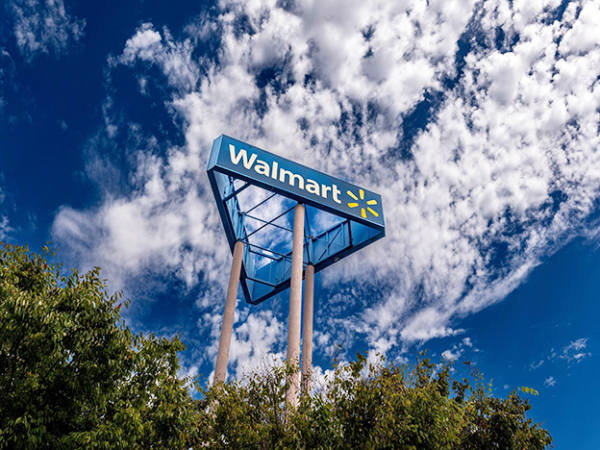Supermarkets are a stock market staple – almost regardless of economic or other socioeconomic woes, people still need to buy food and groceries. The dynamics and market share structures of the sector do shift, but investment in these companies will typically allow investors to make solid, if not always exciting, returns over the long term.
We start our look at this sector close to home, with the UK-listed stocks, a now somewhat depleted offering following the takeovers of Morrisons and, longer ago, Asda, Safeway, Gateway, Iceland and Kwik-Save. The market is dominated by the ‘big four’ of Tesco (TSCO), J Sainsbury (SBRY), Asda and Morrisons, with the bulk of the rest of the market controlled by Waitrose, Marks & Spencer (MKS), Co-op, Aldi and Lidl. Market share at the leading names looks finally to be edging up: the German discounters’ share of the market looks to have peaked, but has, nonetheless reached 17 per cent. The unlisted brands (and often heavily indebted thanks to having been taken private) are losing share, most notably Asda, Morrisons and the Co-op.
Market climate
Current trading looks to be fairly healthy, with all three listed businesses reporting a good end to 2023, and very encouraging Christmas sales, with top-line growth of 6 to 8 per cent, albeit with food price inflation still a key factor. That said, sales volumes do look to be rising. One surprising trend was that higher-end demand (such as Tesco Finest or M&S’ premium products) outperformed general food trends over the festive period. As had been the case for all of last year, non-food sales have been weaker and something of a drag on returns.
Food prices have risen 27 per cent in two years according to the Office for National Statistics (ONS) and were still rising at a passing rate of 9 per cent at the year end, according to CPIH data (consumer prices index including owner occupiers' housing costs). This has led to accusations in some quarters of abusive or ‘gouging’ pricing strategies and abusing inflation to build margins. However, this is not really borne out in the sector’s numbers. Sector margins remain tightly bound and low at around 3-4 per cent earnings before interest and tax (Ebit), and even an examination by the Competition and Markets Authority (CMA) found no real evidence of wrongdoing. Food prices are ahead of wider inflation partly due to stores passing on higher minimum or living wage rates and steep increases in business rates. These are government rather than sectoral policies.
Consumers are under pressure due to inflation, often negative real wage growth and higher rents/mortgage payments – the mortgage price war (which looks unsustainable – lenders are lending at below their cost of funds) has been helpful. But the issues in the Red Sea pose a new inflationary threat to energy and foodstuff costs. However, enabling smarter shopping using promotions (increasingly through loyalty discounts, which the supermarkets generally impose on branded suppliers to fund), online shopping to keep shopping baskets tight and the ever-lurking shadow of the discounters is keeping the big names keen. This looks to have arrested share loss said the discounters, still the common enemy.
One positive for grocery spending looks to be a skew from high to low-ticket spending as consumers defer or cut back on large spending such as home improvements, big electricals, cars and leisure/entertainment. This leaves more money for food, and looks to be one reason why premium product sales are buoyant – people may not be eating out but they are eating better at home.
So, the trading climate is solid, and from an investor point of view, things are looking good for the supermarkets. There is a high level of capital discipline with low rates of estate/store expansion, rationalisation of poorly performing stores and greater concentration on UK operations. Debt across the listed sector is falling (not so for the unlisted brands) as the large businesses are spending only one times depreciation on capital programmes and that money is focused on growth rather than expansion for the sake of expansion. The high free cash flow arising across the sector from this capital restraint should also mean potentially better returns to shareholders via either faster-growing dividends and/or more share buy-backs.
Investors can really only look now at three players in the UK and just two pure plays (Tesco and Sainsbury's as M&S is heavily non-food) and, handily, we have recently had trading updates encompassing Christmas from all three. A fourth player – an outlier and arguably more of a logistics, software or industrials stock – is Ocado (OCDO) but this is still one for the speculator as profits remain elusive.
Marks & Spencer
Having been a great disappointment for investors for many years as the business lost its way, its customer focus and its sense of purpose, this is now emerging as a great recovery story. 2023 was an exceptional year, with the stock up by over 100 per cent by the year-end and no apparent loss of momentum. The year-end trading update revealed food sales up 10 per cent (with volumes up 7 per cent) and evidence of a transition from a heavy ‘basket’ shopper bias to more ‘trolley’ shops – the average buyer is spending more per shop and M&S is edging more towards the mainstream of grocery spending. There has finally been an effective store overhaul programme, helped by taking over some of the Debenhams estate, and the brand looks to be on the mend. The tie-up with Ocado (M&S owns 50 per cent of the joint venture Ocado Retail) remains a drag on profits, but is approaching break-even on its £2bn of revenues. Making a ‘normal’ margin here could bump up group profits by more than 5 per cent.
There is a way to go before this ship is fully righted, but the dividend has been restored (an interim of 1p) and may reach 8p by 2025/26, with some analysts even expecting it to exceed 10p. Earnings per share (EPS) growth is forecast at 15 per cent CAGR, debt is dropping and the shares still look to be pricing in too much risk – the price/earnings (PE) ratio is only c10.5 times. Much of the potential gain has been and gone, but a 10 per cent correction recently has put some value back into the valuation, with fair value still looking to be around 300-310p. Even after the 2023 surge, double-digit returns are still possible here.
J Sainsbury
Sainsbury’s is the steady ship of the industry, but this does mean a less dynamic outlook than for M&S. Argos, Habitat and non-food are weighing on the strong grocery performance, but actions are being taken. In addition, it is widely expected that, following the 7 February strategy update, Sainsbury’s will commence a share buy-back programme – here, too, the view on capital allocation is changing. The company performed strongly in 2023 (up 45 per cent) but most analysts now see the stock as fully priced. Still, a 4.5 per cent yield – plus potentially bigger distributions – could still see market-beating total shareholder returns (TSR), but gains feel more speculative than elsewhere in the sector.
Tesco
Tesco remains the clear market leader in UK groceries, a position it has held consistently since 1995 when it first supplanted Sainsbury’s. Despite the German discounters taking a lot of the mid-to-lower end demand, Tesco's market share has remained in the mid-to-high 20 per cent range (27.6 per cent at the end of last year including M&S Food in market totals), adding 15 basis points to this in the past six months. Its sales in the UK total c£54bn, on which it makes around £2.4bn of Ebit and close to £2bn of free cash flow (ie cash it can choose to invest for growth or distribute), giving a free cash flow yield of around 9 per cent – a historic high.
The business is now more tightly run, with a once sizeable and somewhat deadweight overseas business now limited to modest central European operations making equivalent margins to those in the UK. Banking remains a business with better margins (Ebit of 12-13 per cent), but revenues have hardly moved and profits are one quarter lower than a decade ago (but only 6 per cent of the group total). It is reckoned that Tesco would be happy to offload all of its non-UK and non-grocery operations and, with little appetite to invest in expansion, shareholders should be in line for a large share of the spoils. The bank has a book value of £1.5bn and the non-UK operations potentially the same, the less-core portion is worth 40-45p per share and, while investors already ‘own’ that value, divestment and tighter focus could enhance the value of the remaining core business.
Elsewhere in the business, wholesaler Booker chips in £8bn of sales (but has low margins of around 2 per cent) and is trading well, posting sales growth of more than 10 per cent, driven by its catering businesses. Tesco Mobile, with revenues now exceeding £1bn still makes less than a 1 per cent margin. Online/home delivery is beginning to stabilise after surging during the pandemic, and is no longer the drag on margins it has been recently (13 per cent of sales against around 23 per cent during the pandemic). This is not really good business and, while it does not lose money, relies on time-scarce shoppers maintaining higher-margin baskets. It is a quirk within the grocery sector that online sales are less profitable than in-person shopping. A new dimension to home delivery is the introduction of ‘Whoosh’, an in-house rival to the likes of Getir but offering a fuller range and more favourable pricing than the ‘dark warehouse’ models. While this will never be large, we would expect some market share regain and, for this sector at least, high margins. There were some 500,000 bag drops over the festive period.
Overall, Tesco is trading well, in common with its larger peers, and is operating in a disciplined manner with a strong focus on growth via improved operating returns rather than blind expansion. There are some headwinds via higher costs (wages and business rates) colliding with lower food price inflation. However, with good volume growth and a continuing skew towards higher-margin products and lower exposure to non-food, Tesco should be expected to continue reporting positive trading trends.
Analysts expect to see 8.5 per cent average earnings per share (EPS) growth from 2023 to 2026, strong free cash flow, stable to falling debt, dividend per share growth higher than EPS growth, ongoing share buy-backs and potentially cash release from rationalisations. Even if the current rating (PE of 11.6) is only flat (noting that divestments could trigger a small upwards re-rating), the ‘drag-along’ effect from EPS growth and the boost from share buybacks (around 3.5 per cent a year) could still drive annual capital returns of 10-12 per cent over each of the next two to three years. Add in a yield pushing towards 4 per cent and investors could see a TSR in the low to mid-teens.
M&S could make better returns, but there is still a lot there that needs to come right, plus the share price surge in 2023 has already priced a good deal of that in. Tesco, by contrast, just has to hold a steady course to deliver what should be a market-beating TSR, with only a moderate amount of generally macro rather than micro risk. So, well worth a look at the 300p level.
Next time, we turn our focus to the European supermarkets.











